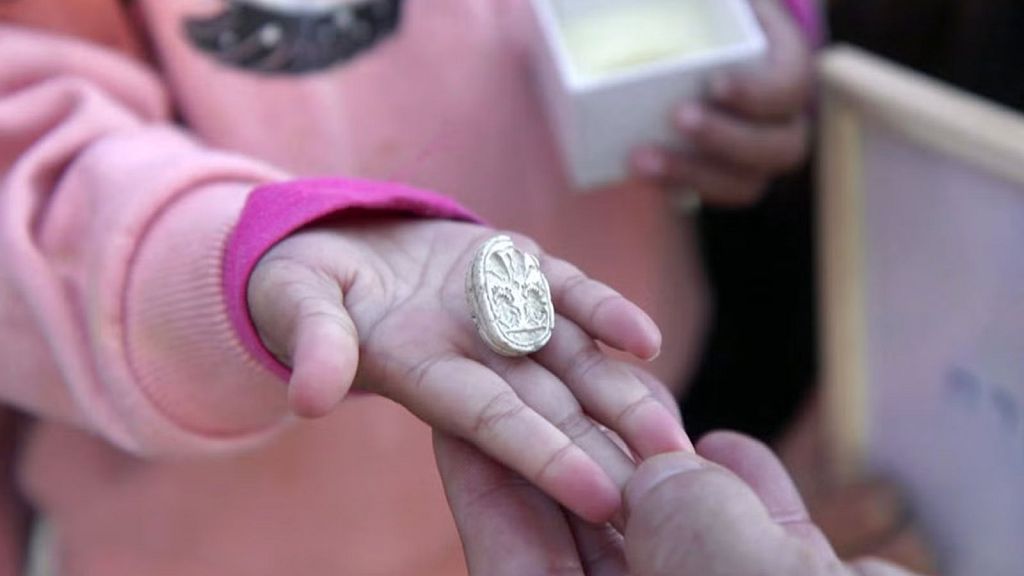During a recent family outing to Tel Azekah in Israel, 3-year-old Ziv Nitzan strolled along a path with her family. She picked up a stone which turned out to be an ancient scarab amulet dating back 3,800 years.
“Out of the 7,000 stones around her, she picked up one stone. Then she brushed off the sand and saw that something was different about it,” Omer Nitzan, Ziv’s older sister, said in a translated video.
“When she rubbed it and removed sand from it, we saw that something was different about it,” continued Omer. “I called my parents to come see the beautiful stone and we realised we’d discovered an archaeological find!”
Tel Azekah, where the toddler unearthed the artifact, is a well-known archaeological site in Israel’s Shephelah area where excavations have taken place for about 15 years. And if Azekah sounds familiar, your Bible studies do you justice: it features in David and Goliath from the First Book of Samuel.
They then “immediately reported this” to the Israel Antiquities Authority (IAA), who subsequently shared on Facebook that the young Ziv had indeed come across an important item.
Canaanite scarab found at Tel Azekah – Israel Antiquities Authority
Daphna Ben-Tor, a specialist in ancient amulets and seals, revealed the significance behind the item: it is a Canaanite scarab dating back to the Middle Bronze Age.
She explained that Canaanite scarabs were used as seals and amulets, found in “graves, in public buildings and in private homes.” Sometimes, they bear “symbols and messages that reflect religious beliefs or status,” she added.
Scarab beetles, as Ben-Tor noted, held sacred status in ancient Egypt, symbolizing new life – as the Egyptian word for scarab comes from the verb meaning “to come into being.” As such, ancient Egyptians viewed the scarab as a symbol of the incarnation of god.

Tel Azekah – Israel Antiquities Authority
Archaeologists have found numerous artefacts in Tel Azekah, including ancient city walls and agricultural structures from the Judahite Kingdom.
“Excavation findings show that during the Middle Bronze and Late Bronze Ages, here in Tel Azekah thrived one of the most important cities in the Judean lowlands,” said Oded Lipschits, director of the Tel Aviv University archaeological dig.
“The scarab found by Ziv joins a long list of Egyptian and Canaanite finds discovered here, which attest to the close ties and cultural influences between Canaan and Egypt during that period.”
For her efforts in discovering the ancient amulet, Ziv Nitzan was honored with a certificate for outstanding citizenship.
Read the full article here


